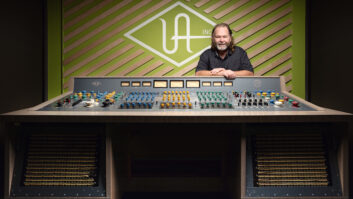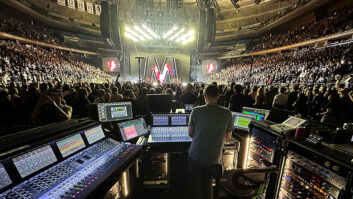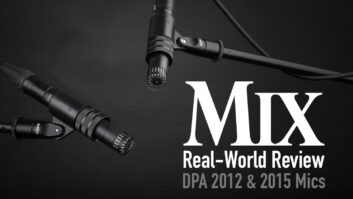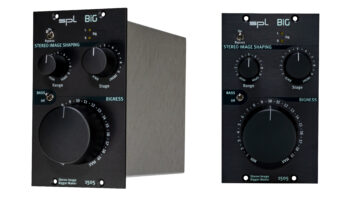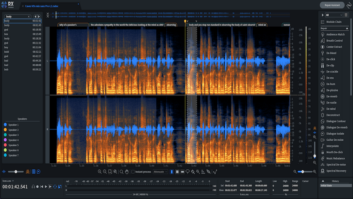We’ve all been there before. We’re halfway through sound check, we’ve done our gain structure and we’re neck deep in EQ’ing and compressing and level balancing all our sources to create a fabulous mix. Sadly, though, it’s not working. There’s too much clashing between the guitars and we’re left feeling, “surely it can’t be this hard.” And we’ve all done it too. Raise the fader on the bass guitar to hear it a little above the mix, and you start twiddling knobs on the EQ. But it doesn’t seem to blend well. It wasn’t until a year ago that I realized that maybe it was the way I had learned how to EQ that might be causing the problem.

The way I learned and the way many audio guys learn to EQ is simple. Let’s take the bass for example. You push the fader of a source up a few decibels above the rest of the mix to hear it more clearly. Then you listen for something that is unnatural about the bass that doesn’t sit well with the rest of the mix. You hear something between 200Hz-500Hz and immediately you reach for the low mid frequency gain knob and turn it up 6dB-8dB, then you move to the frequency knob and sweep it slowly through the range until, Aha! 190Hz, that’s what needs to go away. So you bring the knob to cut that frequency by the amount needed and then reach for the Q knob to play with how much you are doing damage to that range in the low mids and you set the Q appropriately.
For most audio guys I’ve talked to and worked with, this is the way they EQ—they fish around by boosting for the problem that needs to go away and then set it appropriately. Thing is, though, this way of EQ’ing signals can actually be more difficult. You probably know that in the cochlea of your ear are thousands of sterocillia, a hair like nerve cell that jiggles about when the sound from your eardrum is transferred to the cochlea and converts the acoustical energy of sound into mechanical energy from the movement of the small bones in the middle ear. You probably also know listening to sounds at high levels for extended periods of time causes temporary threshold shift in your perception of the loudness of sound. That’s because your ears are not sensitive linearly. The higher the volume, the more sensitive your ears are to hearing details of sound.
What’s interesting about this though is that it means our ears are more attuned to hear things in a signal that has too much of something than not enough. So, you’re more likely to hear that our bass guitar has too much 190Hz that is clashing with the band than you are to hear that it’s missing some information at, say, 900Hz. That’s just the way our ears work. And what’s also interesting is that I find that when I EQ this way, my ears become tired more quickly. The reason has to do with temporary threshold shift. For example, I’ll listen to a recording that sounds really bright and my ears become accustomed to hearing the bright track for the 3-4 minutes it plays. And then if I listen to a track that is neutral and flat in its frequency response, my ears will think the next track will sound dull for a little while because I got used to hearing the bright track. When all you do is boost, boost, boost, to find your problem and then eliminate it, your ears get used to that and everything sounds dull, and the tendency will be to do drastic EQ changes.
There’s another way. In the beginning it takes a lot longer to learn, but let’s revisit our example of the bass guitar and try a new method. I go to EQ my bass, I raise the fader to hear it a little above the mix and I hear something is accentuated somewhere between 200Hz-500Hz, I grab the gain pot on the low mid frequency and CUT by a few dB, I then sweep the frequency around for a few seconds listening to hear what I like, cut more or less, and then adjust my Q. This method takes a bit longer, and in live sound there will be times when you may not have enough time to use this technique, but it actually can generate better results, and I like it because my ears don’t become tired as quickly.
The times I have found this method not as useful are times when I have accentuated energy at a very narrow frequency. For example, last week a drummer brought a brass snare that had a pronounced ring at 600Hz. I had to use the old-fashioned boost and fish around for the frequency method before cutting and then cranked my Q all the way to 3. For these types of situations, it’s very difficult to use the second method merely hear those narrow bandwidth of frequencies that needs cutting.
Jeremy Blasongame is currently a part-time A3 for a concert production company and a Tech Arts Director at Sunridge Commmunity Church. Over the past seven years, he has also worked in two major recording studios and is the author of Church Audio Blog. Feel free to email him at: [email protected] or find him on twitter at@JBsoundguy, or leave a comment below for a good conversation.

